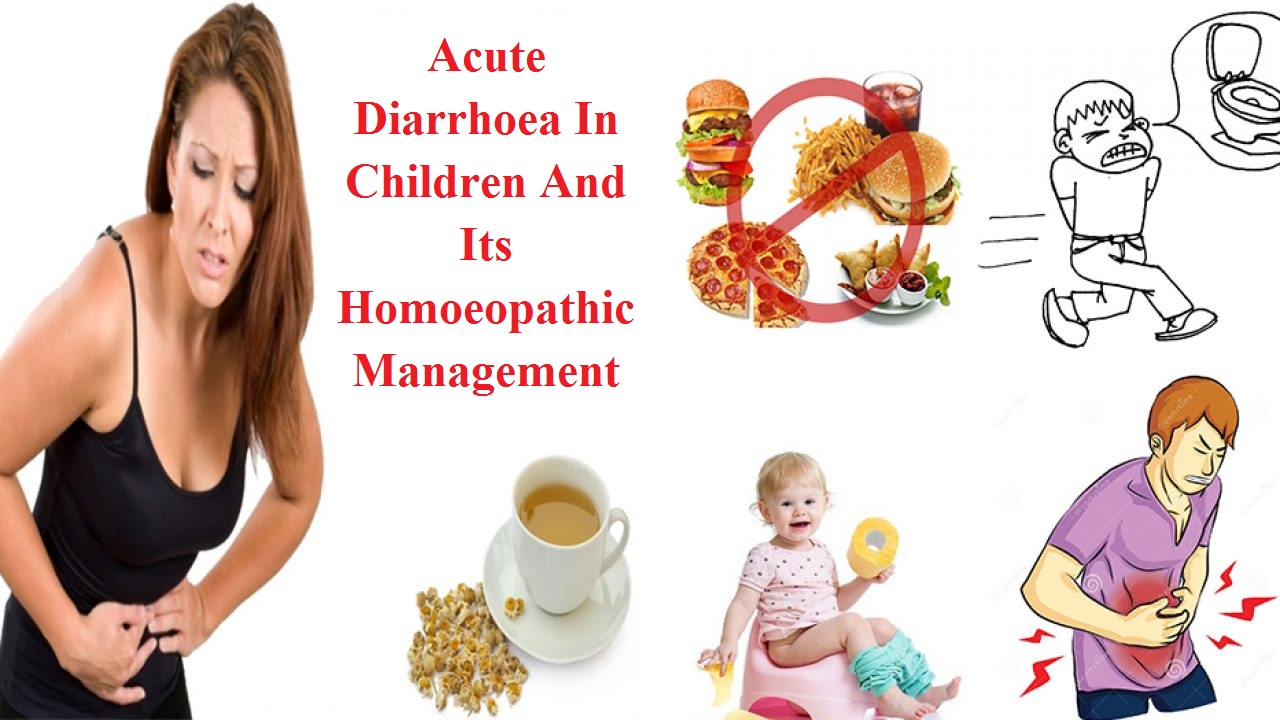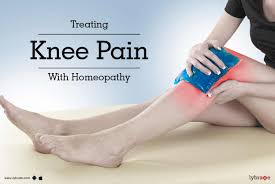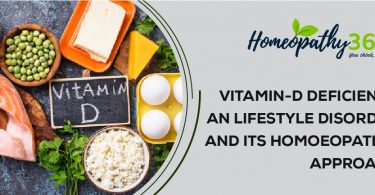
ABSTRACT: Diarrhoea is the commonest problem in the world, through which many children are suffer if it goes severe dehydration can leads to death due to diarrhea. Diarrhoea is passing loose stools 3-4 times in a period of 24 hours. In developing countries, it is very common disease through which every child has a episode of at least 2 time in a year suffer from diarrhoea.
KEYWORDS: Children, acute diarrhoeal infections, homoeopathy, vomiting.
ABBREVIATIONS: ORS – oral rehydration solution.
INTRODUCTION: Diarrhoea is a disease of acute infections enteritis. Diarrhoea is commonly characterised by watery, pasty stool, with increase in frequency of stools for more than 3 times in a day. Sometimes it may or may not be present with blood that is formed as dysentery, or sometimes may also associated with symptoms like vomiting, abdominal pain, fever. The causative agent of acute diarrhoea can be identified in 70-80% cases of acute diarrhoea. Certain drugs, food poisoning or any systemic infection can also lead to diarrhoea.1,2,3
Causes of acute diarrhoea are mostly bacterial, viral, and parasitic infection.1,2,3
Bacteria: Escherichia coli, Vibrio cholera, Salmonella typhi.
Viral: rotavirus, coronaviruses, enteric adenoviruses serotype 40 and 41.
Parasites: Giadia Lamblia, Cryptosporidism Parvum, Entamoeba Histolytica.
The route of transmission of infection is through faeco – oral route, or via eating, or drinking contaminated food. Poverty and poor environmental hygiene in developing countries may also contribute to infection. Acute diarrhoea may last for 7 days, if occurs for more than 14 days, it is called persistent diarrhoea. Diarrhoea may lead to dehydration in the body as the body tries to maintain its fluid and electrolyte balance for proper functioning but when the loss is more, the body gets dehydrated.1, 2,3
Risk factor and complications: Children at risk are those having weak immunity, low rate of immunisation, improper breast feeding, poor sanitation and personal hygiene. Unless the early and appropriate diagnosis and rehydration is not given, it may lead to life threatening conditions.
Examination: Parents need to be asked for total number of stools, their quantity, and if there is any vomiting, fever, or pain in abdomen.
One should observe the child carefully, if he is alert or restless or irritable or lethargic, whether the eyes look normal or sunken, whether the mouth is dry or moist, thirsty or eagerly thirsty. Like by feel or touch, the skin pinch can go back quickly, hence slowly and very slowly, one can assist the level of dehydration, and accordingly start the treatment.
Investigations: stool microscopy, stool culture, stool pH.
Management:1,2
- Rehydration and maintaining hydration.
- Ensuring adequate feeding.
- Oral supplementation of zinc
- Early recognition of danger signs, treatment, and complications.
- Increase intake of ORS solution, increase intake of water.
- Improve nutritional diet, proper breakfast.
- Intravenous fluids may be given in severe case of dehydration.
- Symptomatic treatment of vomiting, pain in abdomen and fever.
- Zinc supplement is also given to avoid severity.
- Vaccination.
- Proper washing of hands.
HOMOEOPATHIC MANAGEMENT:4,5,6
- ACHYRANTHES ASPERA– It is used in acute diarrhoea and cholera. Watery stool, yellowish and mixed with flakes of mucus profuse in quantity. Excessive thirst. Pain in stomach.
- AILANTHUS GLANDULOSA– Thin, watery, offensive diarrhoea, passing involuntarily with the urine. Stools frequent, watery, forcibly expelled.
- CHAPARRO AMARGOSO – Chronic diarrhoea. Stool littile pain, with much mucus.
- ELATERIUM – Watery, copious, forceful stool. Squirting diarrhoea. Frothy, olive green, with cutting pain in abdomen.
- GAMBOGIA– Diarrhoea, with sudden and forcible ejection of bilious stools. Tenesmus after, with burning at anus. Profuse diarrhoea in hot weather.
- LIATRIS SPICATA– Diarrhoea with violent urging and pain in lower part of back. It use in cramp diarrhoea.
- GENTIANA LUTEA- Diarrhoea with sudden urging with copious evacuation. Soft stools, immediately after rising. Bilious diarrhoea in afternoon. Stool soft, yellow, preceded by colicky pains, which become so severe after the stool that they force the patient to bend double.
- HELLEBORUS NIGER- Diarrhoea always preceded by colic, which is relieved after every stool. Frequent pasty, undigested stools. Stools consisting of pure, tenacious, white mucus. Stools like frog-spawn. Diarrhoea, with pain in the abdomen, and nausea.
- JATROPHA – Sudden, profuse, watery, like rice water. Diarrhoea, forced discharge. Loud noise in abdomen like gurgling of water coming out of a bung hole, associated with coldness, vomiting. Better by placing hands in cold water.
- RICINUS COMMUNIS – Rumbling with contraction of recti muscles, colic, incessant diarrhoea with purging. Rice water stool with cramps and chillness. Diarrhoea without pain. Bloody diarrhoea.
- RHODODENDRON CHRYSANTHUM –The disposition to diarrhoea returns in damp weather. Diarrhoea directly after a meal. Diarrhoea, as soon as he rises from bed, in the morning. Loose stool, expelled with pressing. Loose and yellowish stool, but sluggish, expelled with much pressing, and insufficient; sensation as if some faeces remained behind.
- SENNA- Colic especially in little children. Diarrhoea with straining and prolapsed rectum and sore anus. Two liquid stools with griping pains.
- OXALICUM ACIDUM – Chronic morning diarrhoea with cramping about the navel; tenesmus, renewed urging on lying down. Coffee brings on diarrhoea; stools watery; of mucus and blood; stools involuntary. Coffee acts violently on the heart and causes diarrhea. Thirst and colic after diarrhoea. Complaints come on from eating sour fruits, such as strawberries, cranberries, apples, rhubarb, tomatoes, grapes; also from eating sugar and starchy foods. Wine and coffee disagree.
- OPIUM- Frothy (whitish, pasty) and liquid diarrhoea, with burning pain in anus, and violent tenesmus. Involuntary evacuations. Stool tenacious, gluey, yellowish-brown and of a mouldy odour.
REPERTORIAL APPROACH
- Murphy’s Repertory 7 –
- Children – CONVULSIONS, children- diarrhea with- nux-m.
- Children- DENTITION, difficult, teething- diarrhea, with- acet- ac. aeth. apoc. arund. Calc. Calc- P. Cham. ferr- p. ip. jel. kreos. Mag- p. merc. olnd. phos. Phyt. podo. rheum. Sil.
- Children- DIARRHEA, children- diarrhea infants- aloe. ant-c. Ars. cham. chin. Jal. Mag- c. PODO. Rheum. Stann.
- Children – EMACIATION – diarrhea, with- teucr.
- Children- FOOD, artificial, ailments from- diarrhea and vomiting – Nat-p. Nux- v.
- Constitutions- INFANTS, Constitutions- diarrhea- aloe. Ant-c. ars. Chin. Jal. Mag-c. PODO. Rheum. Stann.
- Constitutions- INFANTS, Constitutions- nursing, general – artificial, constipation succeeds diarrhea- alum. Podo.
- Synthesis Repertory 8–
- MIND- SHRIEKING- children, in- waking, on- diarrhea; during – sulph.
- HEAD- HYDROCEPHALUS- diarrhea; after- children; in- zinc.
- RECTUM- DIARRHEA- children; in- Acon. aegle- m. AETH. agar. agn. aloe. ant-c. apis. Arg-n. Ars. arund. Bac. Benz- ac. CALC. calc-p. CALC- S. carc. CHAM. chin. Cina coli. Crot-t. Dulc. Ferr. Form. gamb. ganph. hell. hyos. IP. Mag- c. MAG- M. MERC. Mez. moni. Mur- ac. Nat- m. nux- m. PHOS . PODO. PSOR. Puls. RHEUM. SIL. Staph. STRAM. sul- ac. SULPH. tub. Valer. zinc.
- RECTUM- DIARRHEA- chronic – children; in- chin. coll. iodof. tub.
- RECTUM- DIARRHEA – children- nursling- arund. calc- p. calc- s. cham. coli. sep. Sulph. verat.
- SLEEP- SLEEPINESS- diarrhea- during- children; in – Ant- t. chin. sulph.
- GENERALS – CONVULSIONS- children, in – diarrhea, with – nux- m.
- Complete Repertory 9–
- MIND – IRRITABILITY – diarrhea – in – children- LYC.
- MIND – SHRIEKING, screaming, shouting –children, in – diarrhea, during- JEL. podo.
- ABDOMEN- DISTENSION – general- children, in- arg-n.
- RECTUM- CONSTIPATION- alternating with diarrhea – children, in- nat- p.
- RECTUM- DIARRHEA- general – morning-children, of – cimic. iod.
- RECTUM- DIARRHEA- general- children, in – emaciated children- acet- ac. tub.
- RECTUM- DIARRHEA- general- coldness, with- children- chin.
- RECTUM- DIARRHEA- general- convulsions, during – children- nux- m.
- SLEEP- SLEEPINESS- diarrhea- during- children; in – ANT- T.
- Boericke O., Repertory10 –
- ABDOMEN- diarrhoea, enteritis- cause, occurrence-in infant, children- Acon. Aeth. apis. Arg-n. Ars. arund. Bell. benz- ac. Calc. calc- act. Calc-p. camph. Cham. chin. cina, colos. Crot-t. dulc. ferr. grat. Hell. Ip. Mag- c. merc. Merc- d. nit- ac. Nux-v. Phos- ac. Podo. Psor. Rheum. sep. Sil. Sulph. valer.
- ABDOMEN-diarrhoea, enteritis- cause, occurrence- infant, children, dentition- acet- ac. Acon. Aeth. arund. Bell. benz-ac. borx. Calc. Calc- p. Cham. ip. Kreos. Mag- c. merc. nux-m. Podo. rheum. Sil.
DISCUSSION AND CONCLUSION:
Diarrhoea is a common gastrointestinal infection in childhood. Children can eat anything which he sees can leads to infection easily. Severe dehydration may cause malnutrition in children, but by giving proper homoeopathic medicine, proper hygienic environment, proper diet to children can improve the immunity of the children, decreasing the rate of diarrhoea.
BIBLIOGRAPHY
- Paul VK, Bagga A. Ghai Essential Pediatrics. 8th ed. New Delhi: CBS publisher & distribution Pvt. Ltd. 2009.
- Parthasarathy A. IAP Text Book of Pediatrics. 6th ed. New Delhi: Jaypee Brothers Medical Publishers (P) Ltd.; 2016.
- Goel K, Gupta D. Hutchison’s Paediatrics. 2nd ed. New Delhi: Jaypee Brothers Medical Publishers (P) Ltd.; 2012.
- Boericke W, Boericke OE. Pocket Manual of Homoeopathic Materia Medica & Repertory comprising of the characteristics and guiding symptoms of all remedies. New York: Boericke & Runyon; 1906.
- Clarke J.H, Dictionary of Practical Materia Medica, B. Jain publishers, New Delhi.
- AAA – THE ENCYCLOPEDIA OF PURE MATERIA MEDICA By TIMOTHY F. ALLEN, A.M.,M.D. [Internet]. Homeoint.org. 2020 [cited 5 July 2020]. Available from: http://www.homeoint.org/allen/a.htm.
- Murphy R. Homoeopathic Medical Repertory.2nd Revised ed., New Delhi: B Jain Publishers (P) Ltd. 2006
- Schroyens F. Synthesis, Repertorium Homoeopathicum Syntheticum. 9.1 Version. New Delhi: B. Jain Publishers (P) Ltd. 2007
- Complete Repertory. RADAR Software
- Boericke W. New Manual of Homoeopathic Materia Medica and Repertory. 2ndreaugmented and revised ed., New Delhi: B. Jain Publishers (P) Ltd.2000
About Author:
Dr Mohammed Salahuddin1, Dr Sandhya Rathour2, Dr Shivangi Jain2, Dr Manju Bijarnia2
- HOD, Department of Anatomy, Homoeopathy University, Jaipur (Raj.)
- PG scholar Department of Paediatrics, Dr. M.P.K. Homoeopathic Medical College Hospital and Research Centre, Jaipur (Rajasthan)





